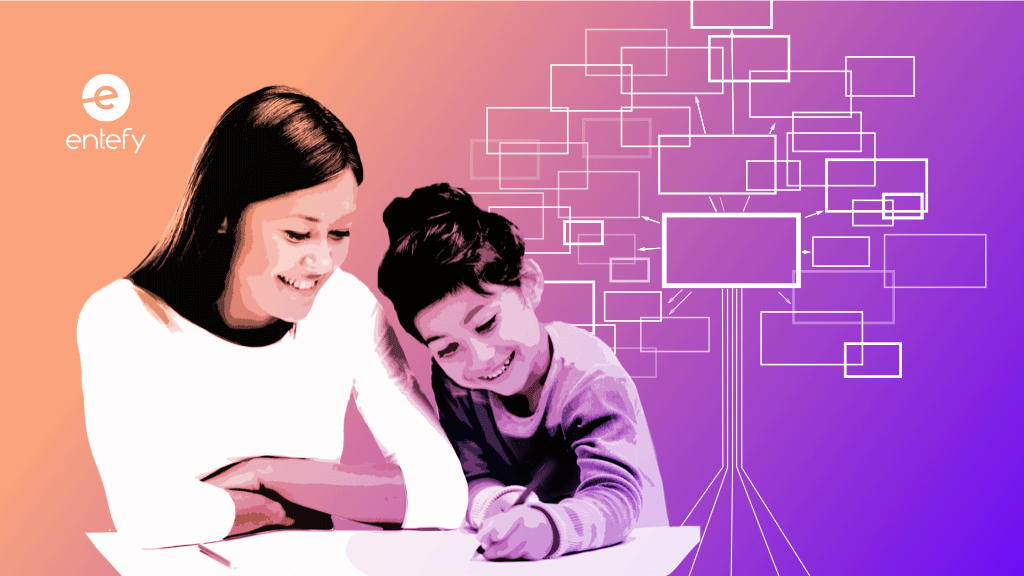We previously looked at the ways artificial intelligence may disrupt the traditional classroom. From blended learning to AI tutors, algorithms are poised to reshape the way teachers engage with their students. But AI may do more than influence classroom experiences. It has the potential to replace classrooms entirely. No one can reliably predict the degree of impact AI may have in education, but one thing seems clear—parents should expect to deal with more complexity and greater responsibility in overseeing their children’s education.
Parents are responsible for nearly every aspect of their children’s development. Healthcare, cognition, socialization, behavioral modeling—parents do it all. The one area in which they exercise less control is in formal education. They make decisions about whether to send their children to private or public schools or to home school, oversee homework sessions, and volunteer for the PTA. But they leave the actual teaching to the teachers.
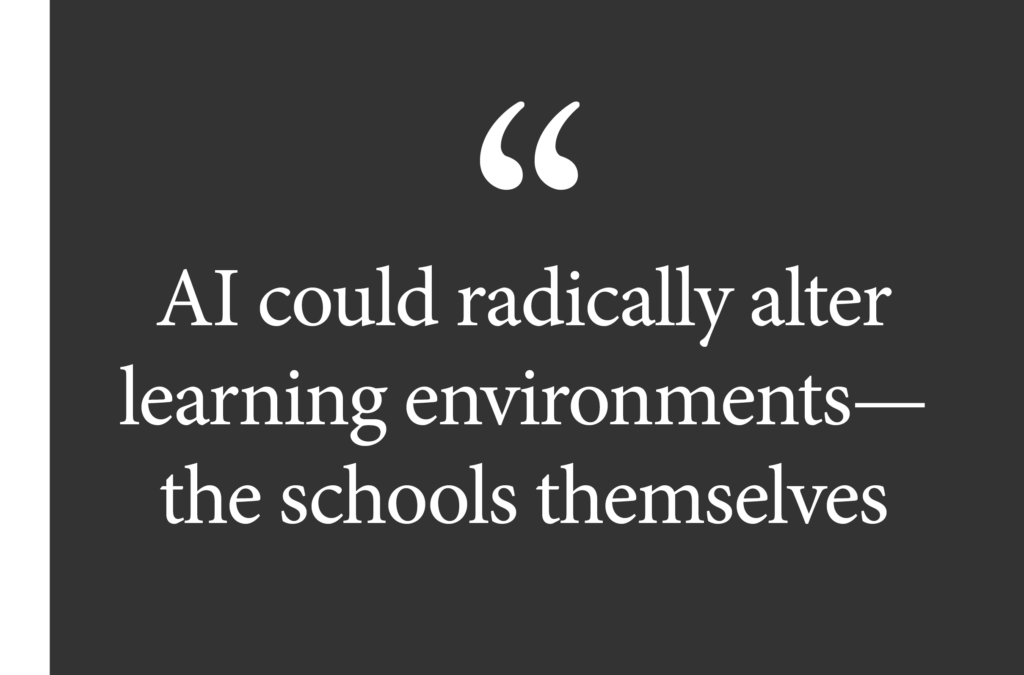
History shows that new technologies upend existing paradigms, usually in incremental ways. But artificial intelligence is unlike any technology we’ve encountered. AI could radically alter learning environments—the schools themselves. What will it mean for parents if their children can learn just as well, if not better, from the comfort of their homes instead of traditional classrooms?
Before we can answer that, we have to address something more fundamental: What is it that we expect of education? And, in particular, what is it that parents expect? Consider these three statements about education, which capture the range of expectations:
“Education does not mean teaching people to know what they do not know. It means teaching them to behave as they do not behave.” (John Ruskin)
“British parents are very ready to call for a system of education which offers equal opportunity to all children except their own.” (Lord Eccles)
“The value of an education…is not the learning of many facts but the training of the mind to think something that cannot be learned from textbooks.” (Albert Einstein)
Depending on how it is structured, education provides a child a craft, career, or trade; a foundation of knowledge; the development of culture; the capacity to learn; a hunger for knowledge and wisdom; or good behavior. That is a pretty long list of expectations. So long, in fact, that there is no school that can actually deliver on everything that might be expected of it.
Rather than try to define what education should be, let’s simply acknowledge the most common elements of people’s expectations. In general, we expect schools to achieve or facilitate: 1) Preparation of children for a productive life and career, 2) the transfer of an agreed-upon base of knowledge, 3) the development of a child’s understanding of their own culture, 4) socialization of a child around behavioral norms, and 5) creation of habits supportive of lifelong learning.
The mass customization of education
The American education system is built on standardization. Unless they attend Montessori or other philosophically-driven schools, most students learn from generalized lessons delivered in generalized classrooms. When they’re old enough, they begin taking standardized tests to determine how well they’ve kept up.
Of course, many students fall behind as they struggle to grasp concepts that are presented in ways they don’t understand. They may be ill-suited to the standardized school environment, or their cognitive development may take place at a different rate than that of their peers, both faster and slower.
Artificial intelligence offers an alternative for these children in the form of personalized learning systems that adjust lessons, reviews, and activities based on individual skill levels and strengths. The technology’s adaptive customization around individual capabilities also offers the opportunity for students to advance at the pace most appropriate for them.
Given evidence that AI-powered intelligent tutoring systems outperform traditional classrooms, AI could have a democratizing effect on education—not to mention reducing the need for large centralized physical schools. With the capacity to constantly adapt to an individual child’s capabilities and circumstances, AI learning systems allow what in manufacturing is called “mass customization.”
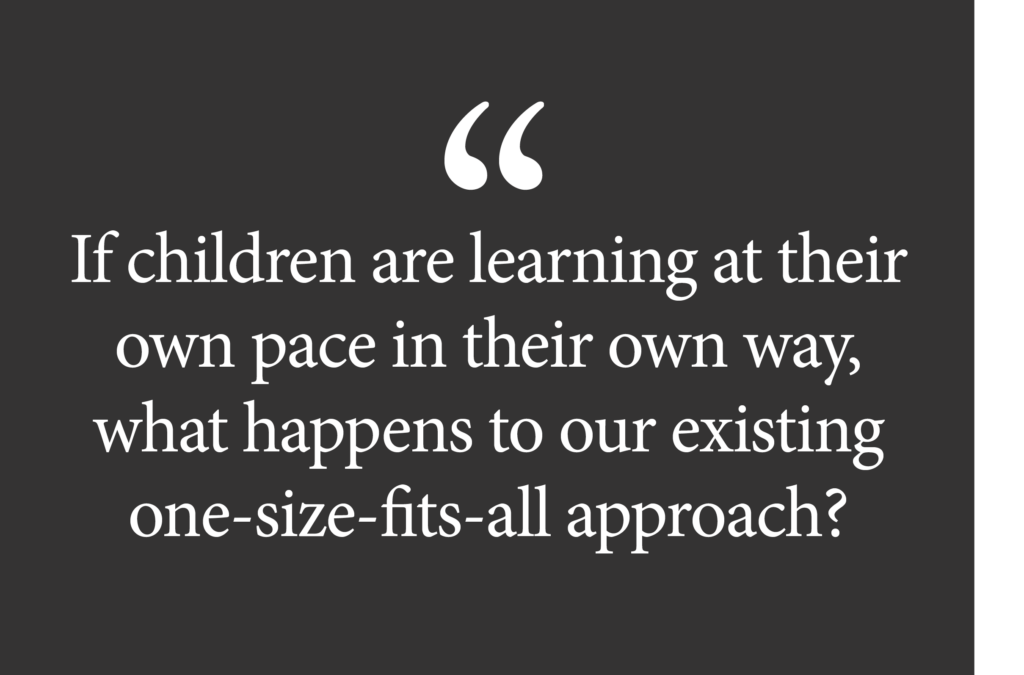
But if children are learning at their own pace in their own way, what happens to our existing one-size-fits-all approach where children are collected together in one large place and put through a standardized curriculum? No one knows the answer, yet.
But taken to its logical extreme, if there is less reason to send children to large, central, physical schools, parents may begin serving as the educational gatekeepers. They’ll also have to facilitate behavioral and social learning opportunities. And of course, they’ll have to grapple with questions of how to prepare their children for a rapidly changing workforce. AI is likely to give us choices, societally and as individuals, which we have not had before and for which we have not considered the full ramifications.
One possible future
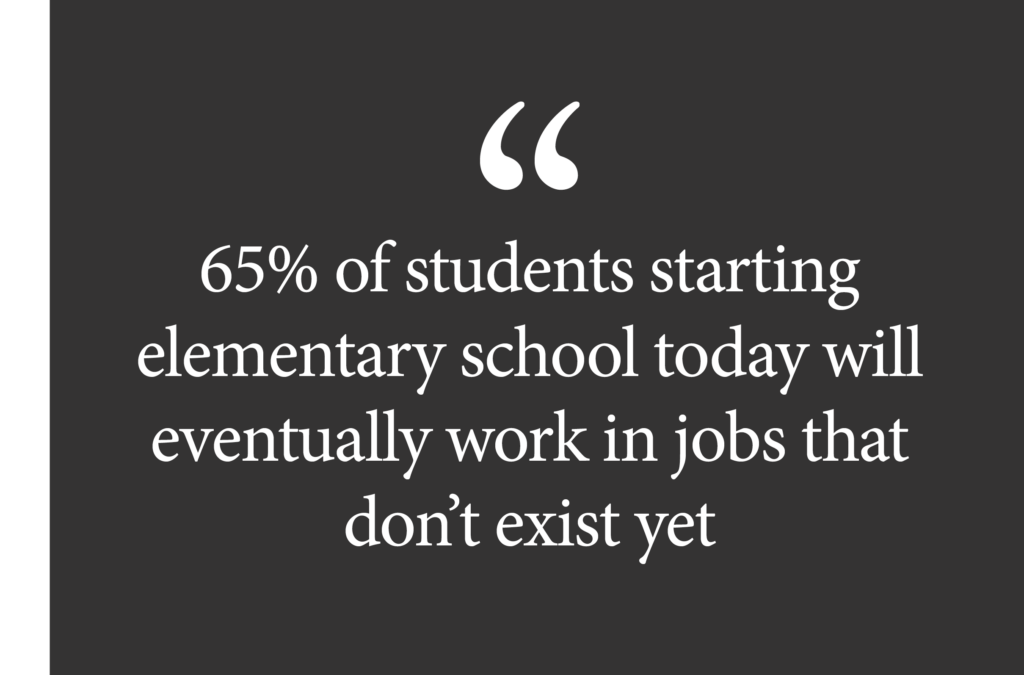
With AI in the mix, it seems likely that our educational choices will broaden; so, too, is the context of education likely to change quickly. A World Economic Forum report on the future of jobs predicts that 65% of students starting elementary school today will eventually work in jobs that don’t exist yet. If a core aim of education is to groom students for career success, how do we do that when we don’t know what careers will be relevant when they come of age?
We don’t know how the impact of AI will play out. It is worth recalling the excitement and exuberance in the early and mid-1980s, when personal computers were first introduced into school systems. There was great anticipation that computers would have significant positive impacts on students’ educational outcomes. Though while computers in schools changed education practices and experiences, data shows that they did not make a meaningful difference in educational outcomes, at least in the aggregate. National scores on the National Assessment of Educational Progress tests for graduating seniors have barely budged in nearly fifty years.
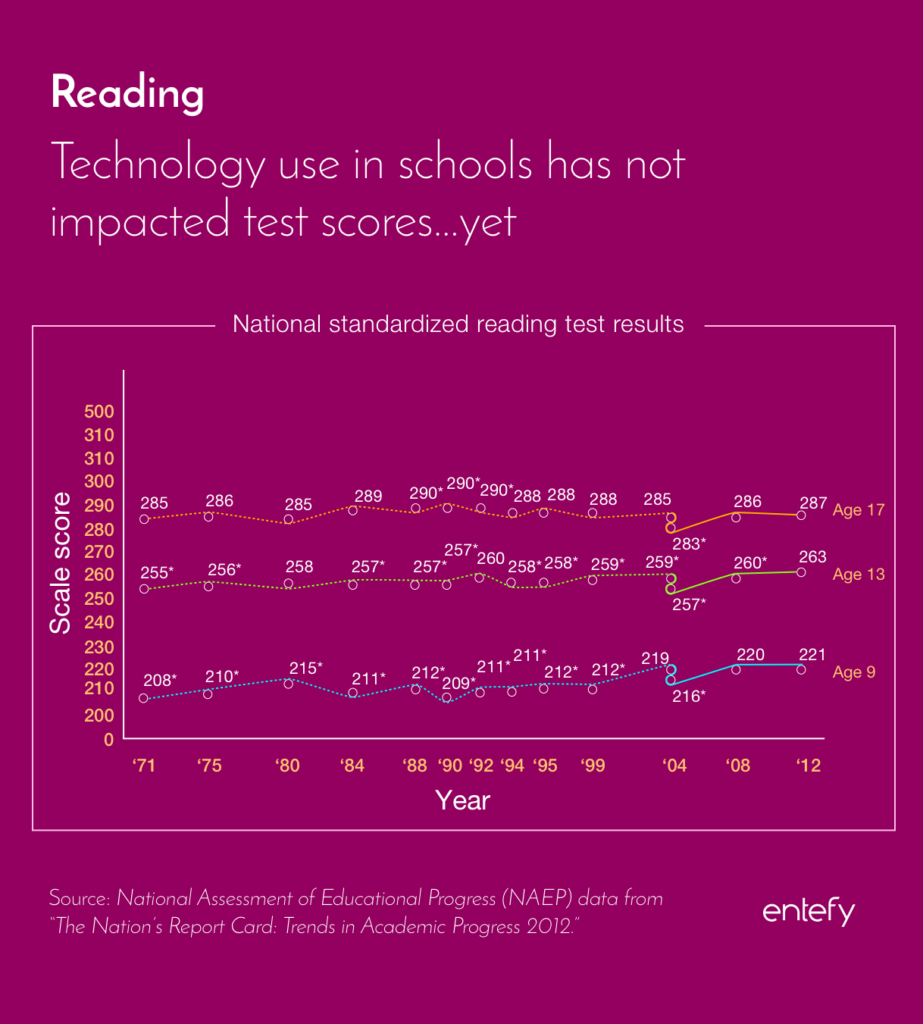
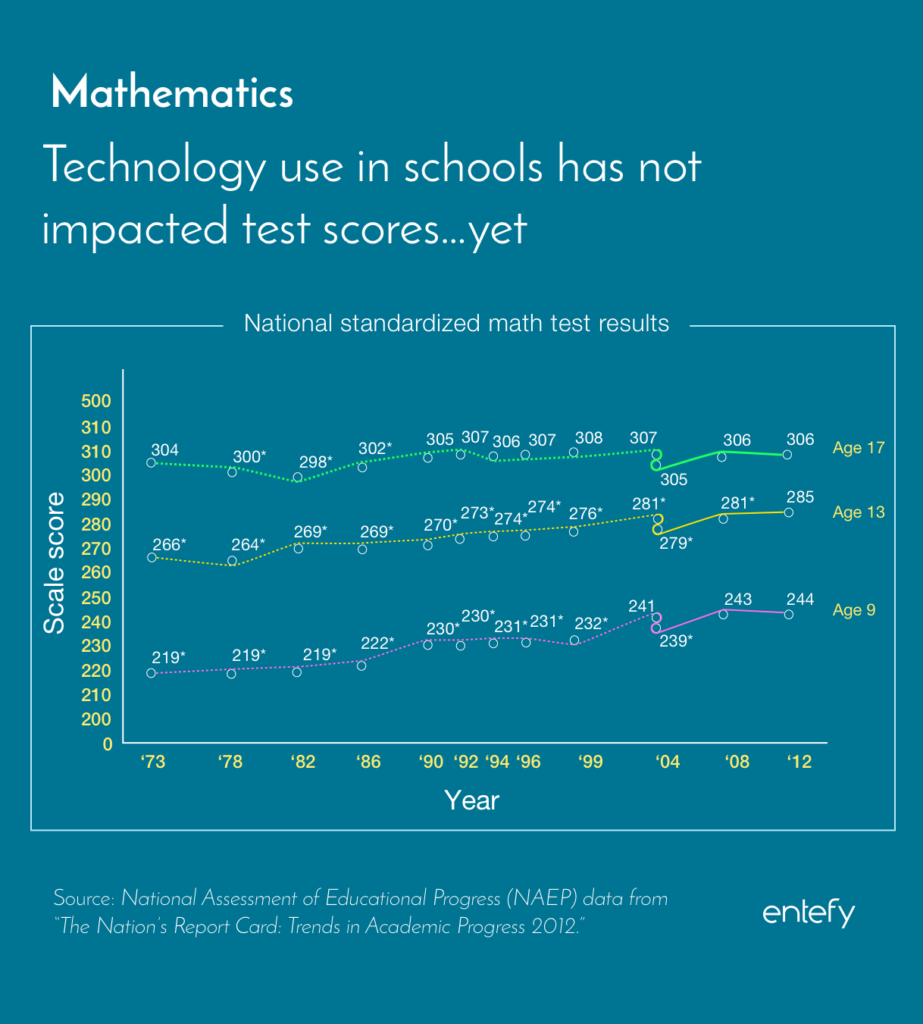
All of which is to say that it is premature to make firm forecasts of how AI might change educational outcomes. We can, however, think through the logical consequences of reasonable assumptions. AI-enabled education might give parents much more control over their child’s education than our current one-size-fits-all approach. But with AI’s potential comes more complexity, consequentiality, and personal accountability. Parents may find themselves facing entirely new and complicated decisions related to their children’s education.
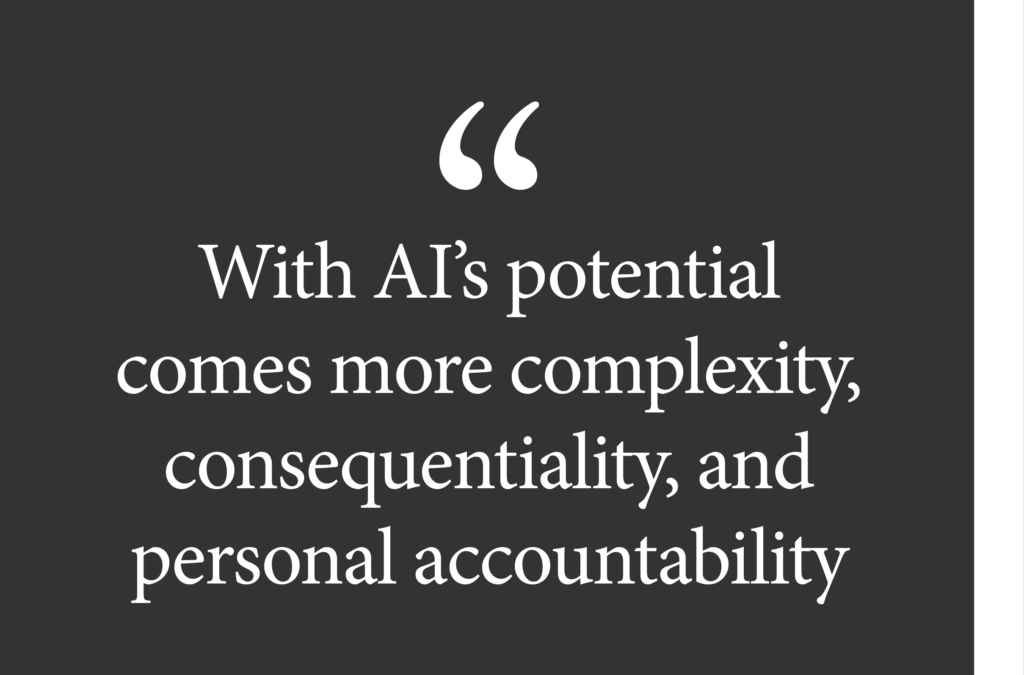
If we indeed move to a system of education that optimizes individual learning experiences and outcomes, then we might expect better outcomes overall but also potentially greater variance in outcomes. Moving away from a factory-style, standardized educational model might also drive higher levels of knowledge acquisition. Right now, education is still strongly a community activity. What happens if the administrative focus changes from large regions to local neighborhoods—to self-organizing groups of parents with shared goals? Greater local control but also, perhaps, less normalization across larger groups.
Following through with this logic, here are 8 possible implications of AI’s adoption in education that parents and society at large may have to address:
1. AI could render large, centralized schoolhouses obsolete. If students are centralized, attending one-size-fits-all classes, and learning at a fixed pace, then big centralized facilities make sense. If students are moving at their own pace with an AI-enabled and customized curriculum, then the need for classrooms and lecturers is reduced, perhaps offset by teachers who function more in the fashion of a tutor or coach. Traditional schools might then be replaced by smaller, distributed structures and specialized learning centers.
2. Parents may assume greater responsibility in children’s education. Parents will likely serve multiple roles as coaches, curators, and guardians as their kids navigate new tools and platforms. Of course, such a shift would dramatically impact the 3.1 million public and 0.4 million private K-12 teachers, not to mention the 3.4 million administrators and support staff.
3. The cost of education may fall. With less expense associated with fewer large, centralized schools and less demand for skilled human teachers, the cost of education at the municipal level could fall materially. The decline in teacher, administrator, and facility costs would of course have to be set against the rise in costs to families if parents become more involved in their children’s education. These costs would be both monetary as well as the opportunity cost of increased time commitment.
4. Customized learning could accelerate natural inequalities. Not all children are created equal. An education system that focuses on standardization reduces the standard deviation between students. If AI tutoring systems can tailor their lessons to different children’s needs, some students will naturally progress faster than others.
5. Mass customization might improve children’s health. There has long been a concern that school children are not getting enough sleep, negatively impacting their physical health and cognitive development. If AI allows for mass customization and decentralization of education, then children’s schedules can be better matched to their sleep needs.
6. Socialization may become a concern if more children learn remotely. Australia’s School of the Air remote learning program could serve as a model for remote education that doesn’t sacrifice socialization. Students at the school learn via Internet lessons but meet classmates at camps and special events each year.
7. Customization and decentralization might lead to loss of normalization. Public schools create an environment that imposes common standards on all students. If schools become smaller, more local, and more customized, we may lose some of the common norms, behavioral, social, and cultural.
8. Parent-managed education would increase the complexity of the lives of parents. While the increase in effectiveness and value to children generated by AI might be substantial, society is not currently organized in a way that makes it easy for parents to play the role that AI might make possible. This would require its own significant shift in workplace standards.
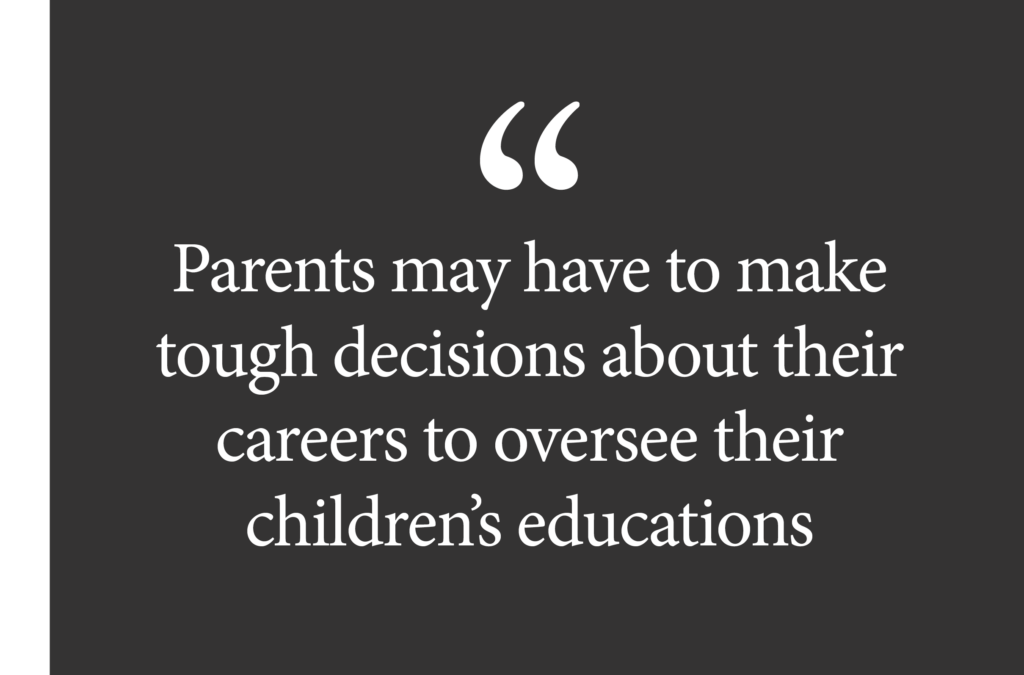
AI-driven learning is a transformative solution with the power to change the way kids view the world and how they interact with the people around them. A child who learns via AI technologies could gain untold benefits and skills intellectually, socially, and emotionally. But this method is likely to demand increased parental oversight, including time-consuming direct supervision of kids’ AI learning activities. Parents may have to make tough decisions about their careers to oversee their children’s educations, or about where the family will live to access the best resources and support for this new type of learning.
AI has the potential to change the quality, delivery, and scalability of education. But it may also change forever the role parents play in their children’s education.
